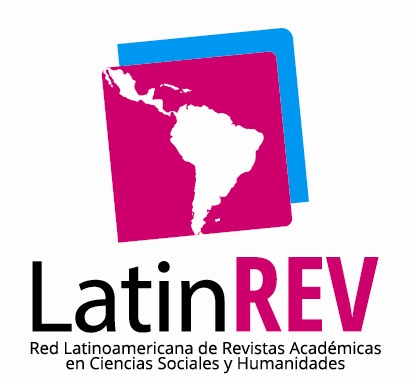El estudio de la Movilidad Inducida por Causas Ambientales. Entre la Inteligencia Artificial y los Modelos Exploratorios
Resumen
El estudio cuantitativo de la movilidad impulsada por factores ambientales (tanto en forma de migración económica como de desplazamiento forzado) ha enfrentado desafíos importantes. Esto se debe no solo a la falta de bases de datos sólidas, sino también a la amplia libertad que tienen los investigadores para diseñar sus modelos exploratorios, lo que puede conducir a resultados sesgados o poco reproducibles. Al seleccionar diferentes variables ambientales, los investigadores pueden encontrar patrones aleatorios o ruido en los datos, en lugar de relaciones genuinas, siguiendo una lógica más exploratoria que el seguimiento de un proceso teórico basado en evidencia histórica. Afortunadamente, este problema se mitiga en los estudios computacionales que utilizan inteligencia artificial, concretamente técnicas de aprendizaje automático. Surge entonces la pregunta de si estas técnicas también pueden reducir el escepticismo sobre los desplazamientos climáticos. Sin embargo, una limitación importante de estos enfoques computacionales sigue siendo la escasez de bases de datos suficientemente grandes y confiables. Además, estos métodos enfrentan desafíos asociados con lo que Conway llama la "zona de peligro", donde la inteligencia artificial es tratada como una caja negra. Esto incluye problemas como la incomprensión por parte del usuario de los supuestos subyacentes, sesgos de confirmación no detectados, interpretación errónea de los datos y alucinaciones de los grandes modelos de lenguaje. Otras innovaciones que emplean también inteligencia artificial se están enfocando cada vez más en los datos de movilidad humana proporcionados por las redes sociales y otras aplicaciones web masivas. Estos datos representan una valiosa fuente de información que puede ser utilizada para comprender mejor los patrones y tendencias migratorias a nivel global.
Descargas
Citas
Aguado-Rodríguez, G. J., Quevedo-Nolasco, A., Castro-Popoca, M., Arteaga-Ramírez, R., Vázquez-Peña, M. A., & Zamora-Morales, B. P. (2016). Predicción de variables meteorológicas por medio de modelos ARIMA. Agrociencia, 50(1), 1-13.
Arlot, S., & Celisse, A. (2010). A survey of cross-validation procedures for model selection. Statistics Surveys, 4, 40–79. https://doi.org/10.1214/09-SS054
Ashraf, M., Salal, Y. K., & Abdullaev, S. M. (2021). Educational data mining using base (individual) and ensemble learning approaches to predict the performance of students. In Data Science: Theory, Algorithms, and Applications (pp. 15-24).
Barocas, S., & Selbst, A. D. (2016). Big data's disparate impact. California Law Review, 104(3), 671–732.
Bem, D. J. (1987). Writing the empirical journal article. In M. P. Zanna & J. M. Darley (Eds.), The compleat academic: A practical guide for the beginning social scientist (pp. 171–201). New York: Random House.
Bohra-Mishra, P., Oppenheimer, M., & Hsiang, S. (2014). Nonlinear permanent migration response to climatic variations but minimal response to disasters. Proceedings of the National Academy of Sciences, 111(27), 9780–9785. https://doi.org/10.1073/pnas.1317166111
Breiman, L. (1996). Bagging predictors. Machine Learning, 24(2), 123–140.
https://doi.org/10.1007/BF00058655
Calonico, S., Cattaneo, M. D., Farrell, M. H., & Titiunik, R. (2022). Regression discontinuity designs using covariates. Review of Economics and Statistics, 104(2), 229–247.
https://doi.org/10.1162/rest_a_00971
Carabantes, M. (2020). Black-box artificial intelligence: An epistemological and critical analysis. AI & Society, 35(2), 309–317.
Conway, D. (2010). The data science Venn diagram. Dataists.
http://drewconway.com/zia/2013/3/26/the-data-science-venn-diagram
Dallmann, I., & Millock, K. (2017). Climate variability and inter-state migration in India. CESifo Economic Studies, 63(4), 560–594. https://doi.org/10.1093/cesifo/ifx014
Dietterich, T. G. (2000). Ensemble methods in machine learning. In International Workshop on Multiple Classifier Systems (Vol. 1857, pp. 1–15). Springer.
Drouhot, L. G., Deutschmann, E., Zuccotti, C. V., & Zagheni, E. (2023). Computational approaches to migration and integration research: Promises and challenges. Journal of Ethnic and Migration Studies, 49(2), 389–407.
Dumitru, S. (2023). The ethics of immigration: How biased is the field? Migration Studies, 11(1), 1-22.
Engle, R. F. (Ed.). (2020). Handbook of financial econometrics: Tools and techniques (Vol. 1). Elsevier.
Entwisle, B., Williams, N. E., Verdery, A. M., Rindfuss, R. R., Walsh, S. J., Malanson, G. P., Mucha, P. J., et al. (2016). Climate shocks and migration: An agent-based modeling approach. Population and Environment, 38(1), 47–71. https://doi.org/10.1007/s11111-016-0254-y
Fadlil, A. (2022). K nearest neighbor imputation performance on missing value data graduate user satisfaction. Jurnal RESTI (Rekayasa Sistem dan Teknologi Informasi), 6(4), 570-576.
Feng, L., Shi, Y., & Chang, L.-T. (2021). Forecasting mortality with a hyperbolic spatial temporal VAR model. International Journal of Forecasting, 37(1), 255–273.
https://doi.org/10.1016/j.ijforecast.2020.05.003
Feng, S., Krueger, A. B., & Oppenheimer, M. (2010). Linkages among climate change, crop yields and Mexico–US cross-border migration. Proceedings of the National Academy of Sciences, 107(32), 14257-14262.
Foresight, U. K. (2011). Migration and global environmental change: Final project report. The Government Office for Science, London.
Friedman, J., Hastie, T., & Tibshirani, R. (2001). The elements of statistical learning (Vol. 1). Springer Series in Statistics.
Garip, F. (2008). Social capital and migration: How do similar resources lead to divergent outcomes? Demography, 45(3), 591–617.
Garip, F. (2012). An integrated analysis of migration and remittances: Modeling migration as a mechanism for selection. Population Research and Policy Review, 31, 637–663.
Garip, F. (2012). Discovering diverse mechanisms of migration: The Mexico–US stream 1970–2000. Population and Development Review, 38(3), 393–433.
Garip, F. (2017). On the move: Changing mechanisms of Mexico–US migration. Princeton University Press.
Garip, F. (2023, May 19). Climate change, migration, and inequality. Ponencia en el Data Science Institute, University of Toronto.
Garson, G. D. (2016). Partial least squares: Regression and structural equation models. Statistical Associates Publishers.
Gould, R. (2021). Toward data‐scientific thinking. Teaching Statistics, 43, S11–S22.
Gray, C., & Wise, E. (2016). Country-specific effects of climate variability on human migration. Climatic Change, 135, 555–568. https://doi.org/10.1007/s10584-015-1592-y
Grow, A., Flahault, A., & Devillanova, C. (2022). Are Facebook advertising data reliable proxies for population indicators? Demography, 59(1), 49–72. https://doi.org/10.4054/MPIDR-WP-2021-006
Grow, A., Perrotta, D., Del Fava, E., Cimentada, J., Rampazzo, F., Gil-Clavel, S., Zagheni, E., Flores, R. D., Ventura, I., & Weber, I. (2022). Is Facebook’s advertising data accurate enough for use in social science research? Insights from a cross-national online survey. Journal of the Royal Statistical Society Series A: Statistics in Society, 185(2), S343–S363.
Mungarro-Matus, J. E., & Mada-Loreto, R. (2024). Mercado de trabajo de personas instructoras de Actividades Rítmicas Masivas en Hermosillo, México. Estudios Y Perspectivas Revista Científica Y Académica , 4(1), 350–367. https://doi.org/10.61384/r.c.a.v4i1.103
Avila, E., Ávila Romano , R., & Fabiano de Abreu Agrela Rodrigues. (2024). Como retardar o envelhecimento cerebral: Uma análise neurocientífica. Revista Científica De Salud Y Desarrollo Humano, 5(1), 84–95. https://doi.org/10.61368/r.s.d.h.v5i1.76
Mungarro-Matus, J. E., & Mada-Loreto, R. (2024). Mercado de trabajo de personas instructoras de Actividades Rítmicas Masivas en Hermosillo, México. Estudios Y Perspectivas Revista Científica Y Académica , 4(1), 350–367. https://doi.org/10.61384/r.c.a.v4i1.104
Fernández C., F. (2024). Determinación De Erodabilidad En Áreas De Influencia Cuenca Poopo Región Andina De Bolivia. Horizonte Académico, 4(4), 63–78. Recuperado a partir de https://horizonteacademico.org/index.php/horizonte/article/view/19
Medina Nolasco, E. K., Mendoza Buleje, E. R., Vilca Apaza, G. R., Mamani Fernández, N. N., & Alfaro Campos, K. (2024). Tamizaje de cáncer de cuello uterino en mujeres de una región Andina del Perú. Arandu UTIC, 11(1), 50–63. https://doi.org/10.69639/arandu.v11i1.177
Da Silva Santos , F., & López Vargas , R. (2020). Efecto del Estrés en la Función Inmune en Pacientes con Enfermedades Autoinmunes: una Revisión de Estudios Latinoamericanos. Revista Científica De Salud Y Desarrollo Humano, 1(1), 46–59. https://doi.org/10.61368/r.s.d.h.v1i1.9
Vera Ríos, E. R., Enriquez Sarango, M. I., Sarmiento Ordinola, D. A., Valle Zambrano, J. F., & Balcázar Garzón, M. E. (2025). Impacto del Peso de la Mochila Escolar en la Postura de Estudiantes: Un Enfoque Preventivo. Ciencia Y Reflexión, 4(1), 211–232. https://doi.org/10.70747/cr.v4i1.97
Céspedes Morai, J. M. (2024). Evolución de la Industria del Turismo Sostenible en España. Ciencia Y Reflexión, 3(2), 126–144. https://doi.org/10.70747/cr.v3i2.11
Hastie, T., Tibshirani, R., & Friedman, J. (2009). The elements of statistical learning: Data mining, inference, and prediction. Springer Science & Business Media.
He, T., Kong, R., Holmes, A. J., Nguyen, M., Sabuncu, M. R., Eickhoff, S. B., Bzdok, D., Feng, J., & Yeo, B. T. T. (2020). Deep neural networks and kernel regression achieve comparable accuracies for functional connectivity prediction of behavior and demographics. NeuroImage, 206, 116276.
Henry, S., Schoumaker, B., & Beauchemin, C. (2004). The impact of rainfall on the first out-migration: A multi-level event-history analysis in Burkina Faso. Population and Environment, 25(5), 423–460.
Ioannidis, J. P. A. (2005). Why most published research findings are false. PLoS Medicine, 2(8), e1004085. https://doi.org/10.1371/journal.pmed.1004085
Jang, J.-H., Choi, J., Roh, H. W., Son, S. J., Hong, C. H., Kim, E. Y., Kim, T. Y., & Yoon, D. (2020). Deep learning approach for imputation of missing values in actigraphy data: Algorithm development study. JMIR mHealth and uHealth, 8(7), e16113.
Jurafsky, D., & Martin, J. H. (2021). Speech and language processing. Pearson Education.
Kalton, G., & Flores-Cervantes, I. (2003). Weighting methods. Journal of Official Statistics, 19(2), 81–97.
Kaparthi, S., & Bumblauskas, D. (2020). Designing predictive maintenance systems using decision tree-based machine learning techniques. International Journal of Quality & Reliability Management, 37(4), 659-686.
Kohavi, R. (1995). A study of cross-validation and bootstrap for accuracy estimation and model selection. In Proceedings of the 14th International Joint Conference on Artificial Intelligence (IJCAI), 14(2), 1137–1145.
Leasure, D. R., Kashyap, R., Rampazzo, F., Dooley, C. A., Elbers, B., Bondarenko, M., Verhagen, M., et al. (2023). Nowcasting daily population displacement in Ukraine through social media advertising data. Population and Development Review, 49(2), 231-254.
https://doi.org/10.1111/padr.12558
LeCun, Y., Bengio, Y., & Hinton, G. (2015). Deep learning. Nature, 521(7553), 436–444.
https://doi.org/10.1038/nature14539
Leyk, S., Maclaurin, G. J., Hunter, L. M., Nawrotzki, R. J., Twine, W., Collinson, M., & Erasmus, B. (2012). Spatially and temporally varying associations between temporary outmigration and natural resource availability in resource-dependent rural communities in South Africa: A modeling framework. Applied Geography, 34, 559–568.
https://doi.org/10.1016/j.apgeog.2012.02.009
Leys, C., Delacre, M., Mora, Y. L., Lakens, D., & Ley, C. (2019). How to classify, detect, and manage univariate and multivariate outliers, with emphasis on pre-registration. International Review of Social Psychology, 32(1). https://doi.org/10.5334/irsp.289
Llopis Goig, R. (2007). El nacionalismo metodológico como obstáculo en la investigación sociológica sobre migraciones internacionales. Empiria. Revista de Metodología de Ciencias Sociales, 13, 101–120. https://doi.org/10.5944/empiria.13.2007.1161
Molina, M., Pastukhov, A., & Kastellec, J. (2023). Causal inference in applied microeconomics: An introduction to machine learning methods. Journal of Economic Literature, 61(2), 445–502.
https://doi.org/10.1257/jel.20211503
Molina, M. D., Chau, N., Rodewald, A. D., & Garip, F. (2023). How to model the weather-migration link: A machine-learning approach to variable selection in the Mexico-US context. Journal of Ethnic and Migration Studies, 49(2), 465-491.
Molina, M., & Garip, F. (2019). Machine learning for sociology. Annual Review of Sociology, 45(1), 27-45.
Mueller, V., Quisumbing, A., Lee, H. L., & Droppelmann, K. (2014). Resettlement for food security’s sake: Insights from a Malawi land reform project. Land Economics, 90(2), 222–236.
https://doi.org/10.3368/le.90.2.222
Munshi, K. (2003). Networks in the modern economy: Mexican migrants in the U.S. labor market. The Quarterly Journal of Economics, 118(2), 549–599.
Navarro, C. D. (2015). Migración y desempleo: Un análisis espacial para el noroeste argentino. Documentos de trabajo, 14. Universidad Nacional de Salta.
Nawrotzki, R. J., DeWaard, J., Bakhtsiyarava, M., et al. (2017). Climate shocks and rural-urban migration in Mexico: Exploring nonlinearities and thresholds. Climatic Change, 140, 243–258.
https://doi.org/10.1007/s10584-016-1849-0
Nawrotzki, R. J., Riosmena, F., & Hunter, L. M. (2013). Do rainfall deficits predict U.S.-bound migration from rural Mexico? Evidence from the Mexican Census. Population Research and Policy Review, 32, 129–158. https://doi.org/10.1007/s11113-012-9251-8
Passonneau, R. J., & Carpenter, B. (2014). The benefits of a model of annotation. Transactions of the Association for Computational Linguistics, 2, 311–326.
Porst, L., & Sakdapolrak, P. (2018). Advancing adaptation or producing precarity? The role of rural-urban migration and translocal embeddedness in navigating household resilience in Thailand. Geoforum, 97, 35–45. https://doi.org/10.1016/j.geoforum.2018.10.011
Rampazzo, F., Rango, M., & Weber, I. (2023). New migration data: Challenges and opportunities. In Handbook of Computational Social Science for Policy (p. 345).
Riosmena, F., Nawrotzki, R., & Hunter, L. (2018). Climate migration at the height and end of the great Mexican emigration era. Population and Development Review, 44(3), 455.
Robinson, C., & Dilkina, B. (2018). A machine learning approach to modeling human migration. In Proceedings of the 1st ACM SIGCAS Conference on Computing and Sustainable Societies (pp. 1-8). https://doi.org/10.1145/3209811.3209868
Rousseeuw, P. J., & Hubert, M. (2011). Robust statistics for outlier detection. Wiley Interdisciplinary Reviews: Data Mining and Knowledge Discovery, 1(1), 73–79. https://doi.org/10.1002/widm.2
Sakdapolrak, P., Naruchaikusol, S., Ober, K., Peth, S., Porst, L., Rockenbauch, T., & Tolo, V. (2016). Migration in a changing climate: Towards a translocal social resilience approach. DIE ERDE – Journal of the Geographical Society of Berlin, 147(2), 81–94. https://doi.org/10.12854/erde-147-6
Thober, J., Schwarz, N., & Hermans, K. (2018). Agent-based modeling of environment-migration linkages: A review. Ecology and Society, 23(2). https://www.jstor.org/stable/26799102
Trinh, T. T., & Munro, A. (2023). Integrating a choice experiment into an agent-based model to simulate climate-change induced migration: The case of the Mekong River Delta, Vietnam. Journal of Choice Modelling, 48, 100428. https://doi.org/10.1016/j.jocm.2023.100428
Warner, K., & Afifi, T. (2013). Where the rain falls: Evidence from 8 countries on how vulnerable households use migration to manage the risk of rainfall variability and food insecurity. Climate and Development, 6(1), 1–17. https://doi.org/10.1080/17565529.2013.835707
Xu, C., Kohler, T. A., Lenton, T. M., Svenning, J.-C., & Scheffer, M. (2020). Future of the human climate niche. Proceedings of the National Academy of Sciences, 117(21), 11350–11355.
Derechos de autor 2025 Bernardo Bolaños-Guerra , Sazcha Marcelo Olivera-Villarroel

Esta obra está bajo licencia internacional Creative Commons Reconocimiento 4.0.













.png)




















.png)
1.png)


